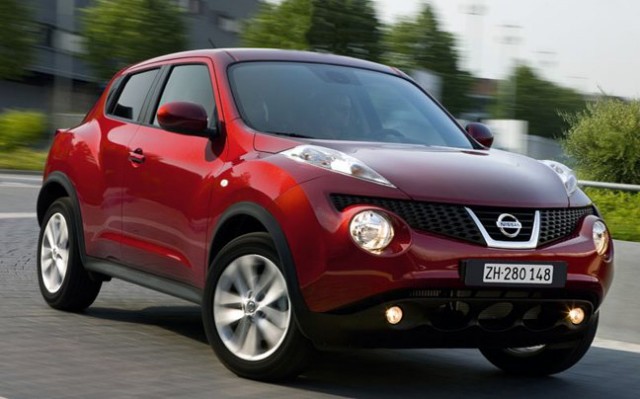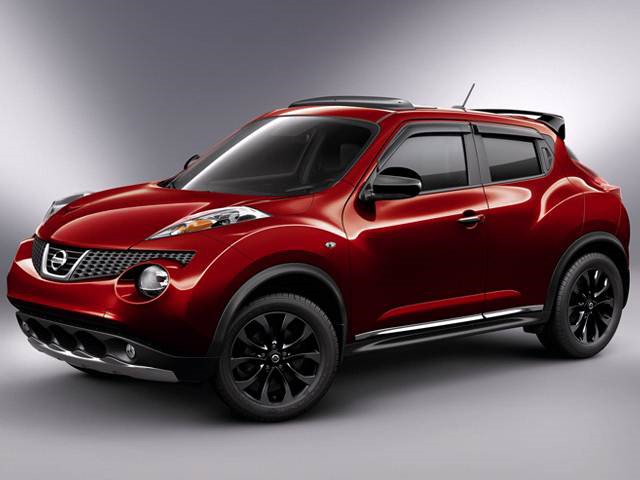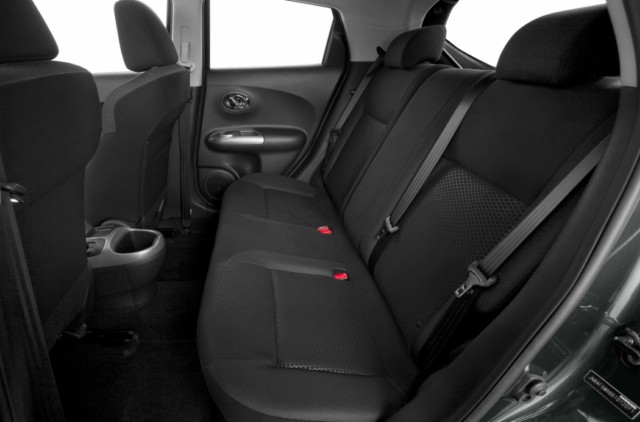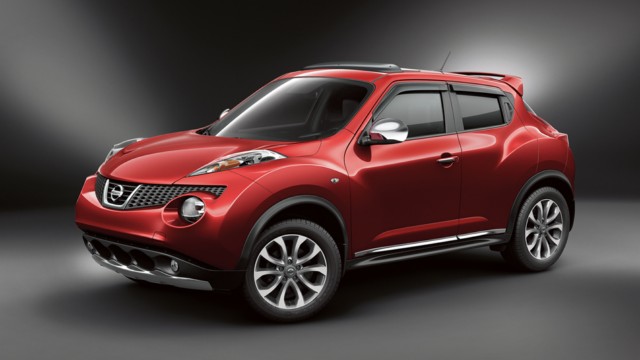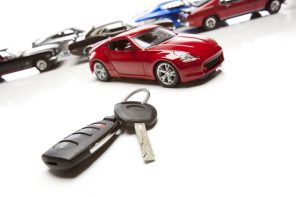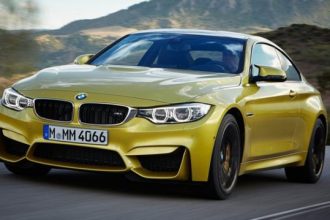The Juke is based on the B platform that have developed jointly the Renault with Nissan, with an elongated wheelbase. The design is characterized by edges, curves, inflated wings and luminaires protrude. The profile is marked by the prominent wheel arches and tall fitted waistline body contrasting with small side windows. The coupe look is enhanced with the rear door handles hidden near the rear pillars. A design drawback is the drag coefficient Cd 0,35. Its dimensions make it an ideal city car, as apart from the high driving position of the 4,125 m long, the 1,765 m wide and 1,570 m high create a single small volume manufacturing. Simultaneously the wheelbase reaches 2.5 meters, the ground clearance 180 mm and weight of 1,295 pounds.
Inside the Juke is equally bold, with curved surfaces that dominate everywhere. The details on the center console, in airways, shifter and instrument panel give life despite the gray hard plastic dashboard. The plastic is not the most expensive material, but it is deemed satisfactory and looks solid, while the assembly has no flaws. On the other hand, the ergonomics have specificities and mainly to a system I-CON (Integrated Control), which needs some time to adapt. The three driving programs (Eco, Normal and Sport) with changes in throttle response, the engine torque and the directness of the steering assist three different driving styles. The remainder of the front wheel with the different buttons for audio, telephone and cruise control, instrument cluster with two large instruments are easy to read, while the multi function display between showing them the information trip computer.
The spaces are at least acceptable, as front passengers do not face any particular problem, while in the back we can’t say the same. The venue for the heads is moderate due to the strongly sloped roof, while the small back windows cause claustrophobic feelings. Regarding to the storage, is enough compartment with pockets, cupholders and door pockets. Unlike the luggage compartment with a capacity of just 251 liters (floor underneath is handy for objects) is certainly small, though by folding the rear seats in a 60:40 ratio, it is increased to 830 liters.
The Energy dCi turbo with a capacity of 1,461 cc, delivers 110 horsepower at 4,000 amped rpm and 260 Nm of torque, with a peak appears only at 1,750 rpm. This engine is combined only with a 6 speed manual transmission featuring exhaust gas recirculation system and thermostatically controlled automatically flow to the oil pump. The biggest advantage, however the engine torque than the fuel economy. In many kilometers of our test we did not see the trip computer price to exceed 5.6 litres/100km, price in conjunction with tank capacity of 46 liters gives easy 900 km of autonomy. Finally, regarding the performance, certainly not firing on the road but the 0-100 km/hr comes in 11.2 sec with a top speed that reaches 180 km/hr.
Despite the increased height of the body (18 points), we can not talk about the off road capabilities of the Juke. Cause, the predominantly asphalt tires and the front wheel run, without a system that locks them, which implies easy wheel spin. Perhaps, with the four wheel drive versions (not available with the dCi engine) and other tires it will go better. In any case, the Juke is a success, is given and most definitely love it despite thand in no case were immaterial passes, which for many schediast’es is the secret of success into the category of lifestyle car.
View more here: Nissan Murano 2015 | Third generation, new era, Nissan unveiled the hatchback Pulsar.
By Nicole P.

